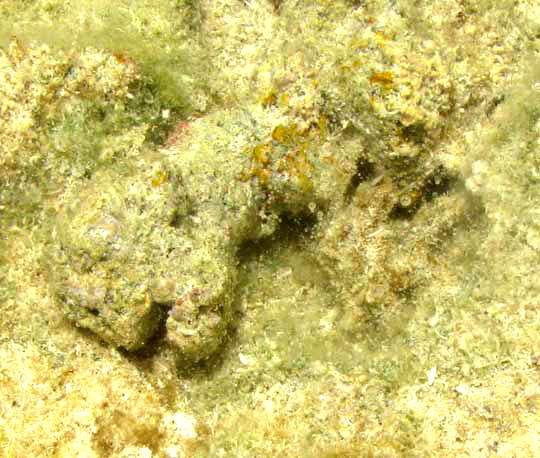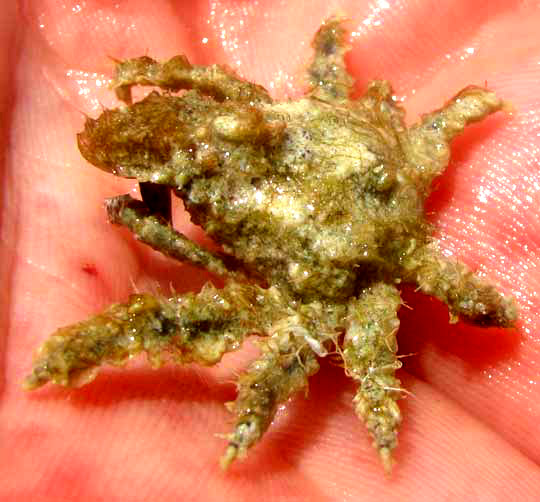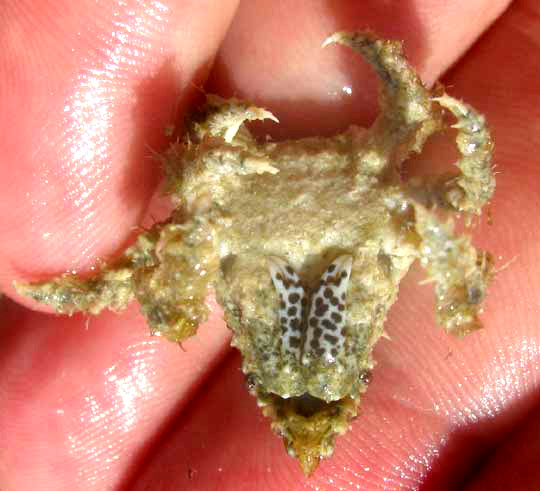Excerpts from Jim Conrad's
Naturalist Newsletter
from the July 31, 2011 Newsletter issued from Mayan Beach Garden Inn 20 kms north of Mahahual; Caribbean coastal beach and mangroves, ~N18.89°, ~W87.64°, Quintana Roo state, MÉXICO
DECORATOR CRAB
I was gathering wool gazing into a tidal pool at low tide when something I'd been thinking was a mere alga- and-debris-covered irregularity at the bottom of the pool began purposefully trudging across the pool's bottom. I took a picture of the thing but because of its effective camouflage you can hardly make it out in the resulting picture. You can see if you can find it below:

In that picture the object in question occupies about 1/20th of the image and appears a little right of center. I grabbed the thing so you can see it better below:

Flipping it over I saw what's shown below:

In that picture the two flattened, dark-purple-dotted items toward the body's rear are the last of four pairs of flattened, paddle-like legs modified to help with swimming. Legs adapted like this are referred to as swimmerets. The body is about an inch long (2.5cm).
This time Marcia's Guide to Reef Creatures didn't help much with identification because the closest picture found in it didn't bear a name. The authors explained that crabs in this group often simply can't be identified without collection and "scientific examination."
As a group these crabs are informally known as Decorator Crabs. They seem to occur widely, and are distributed through several genera. They camouflage themselves by attaching a wide range of marine life and debris to tiny hooks on their carapaces, snouts and legs. The attached organisms often remain alive, and occasionally even reproduce. Other crabs of the same species in the same pool were greenish because their bodies were adorned with green algae.
If anyone can figure out what genus or species this is, let me know.